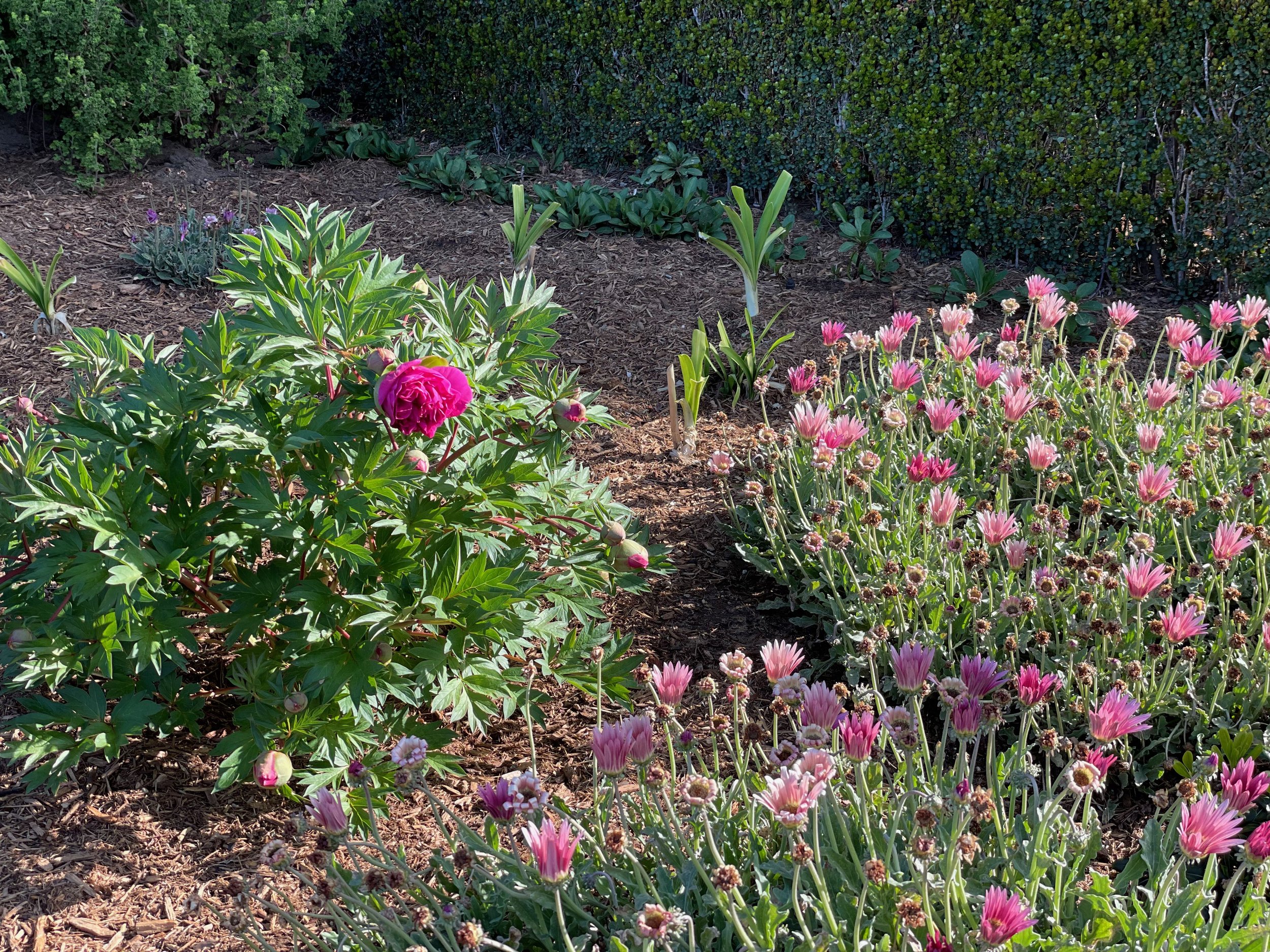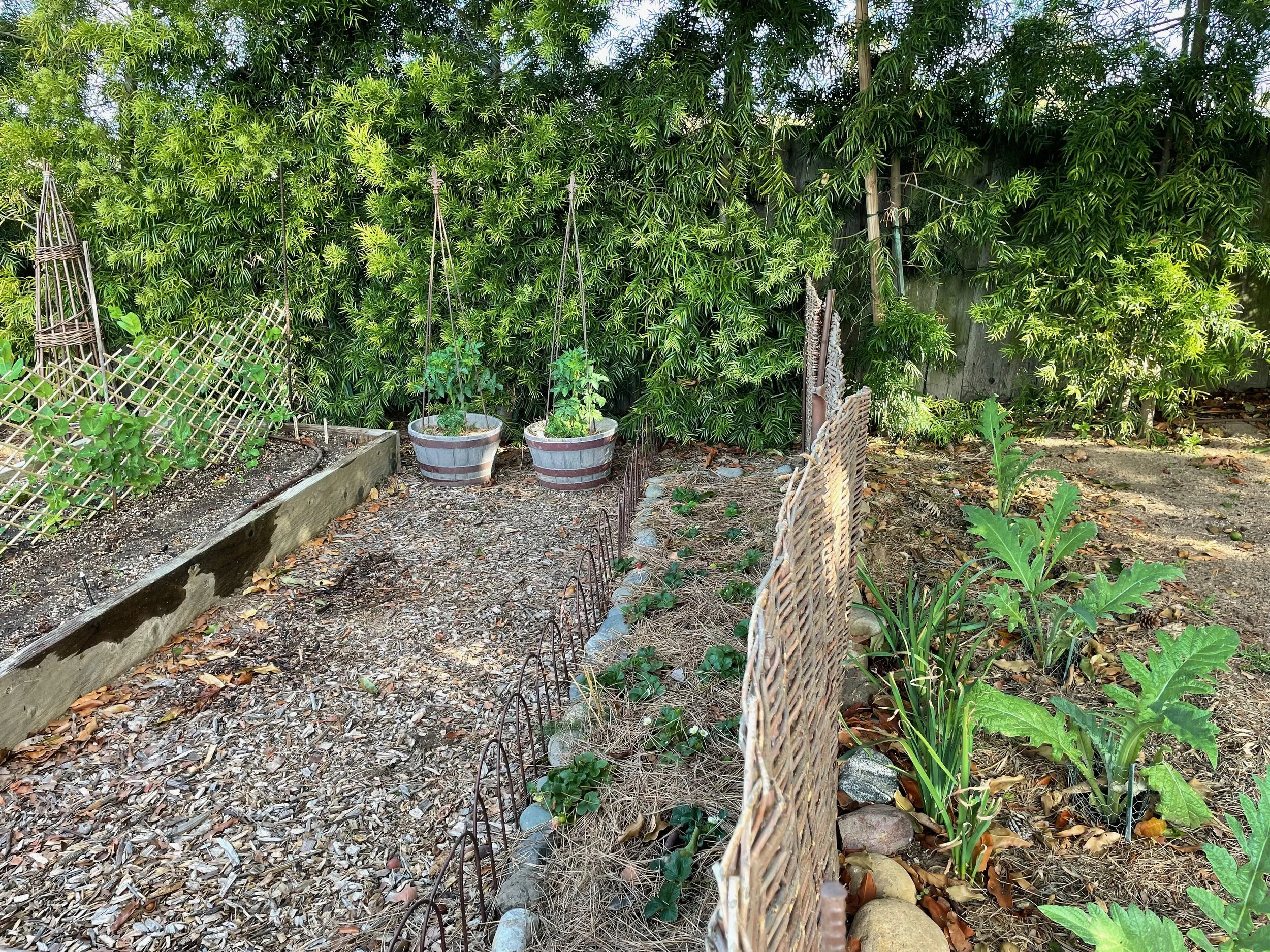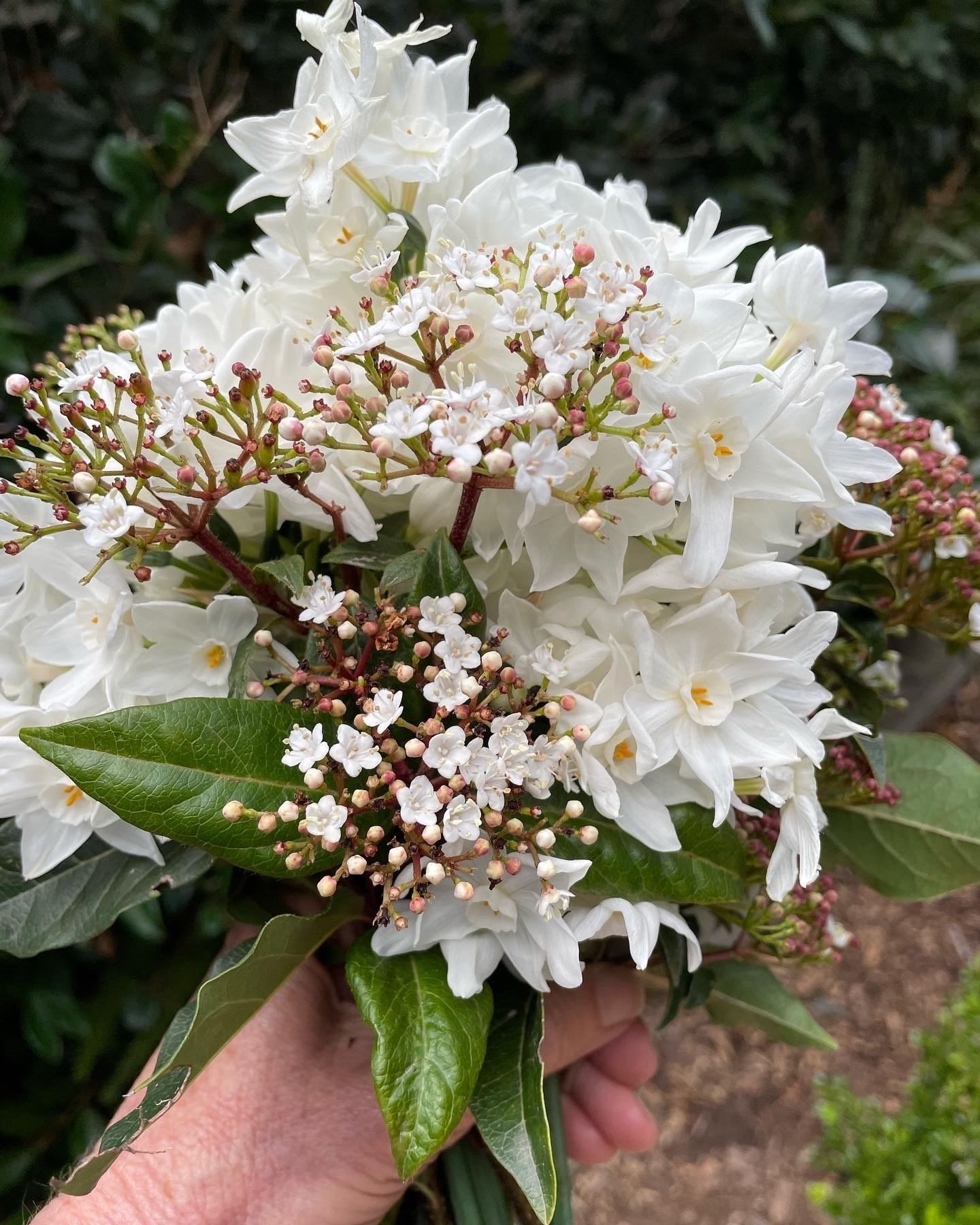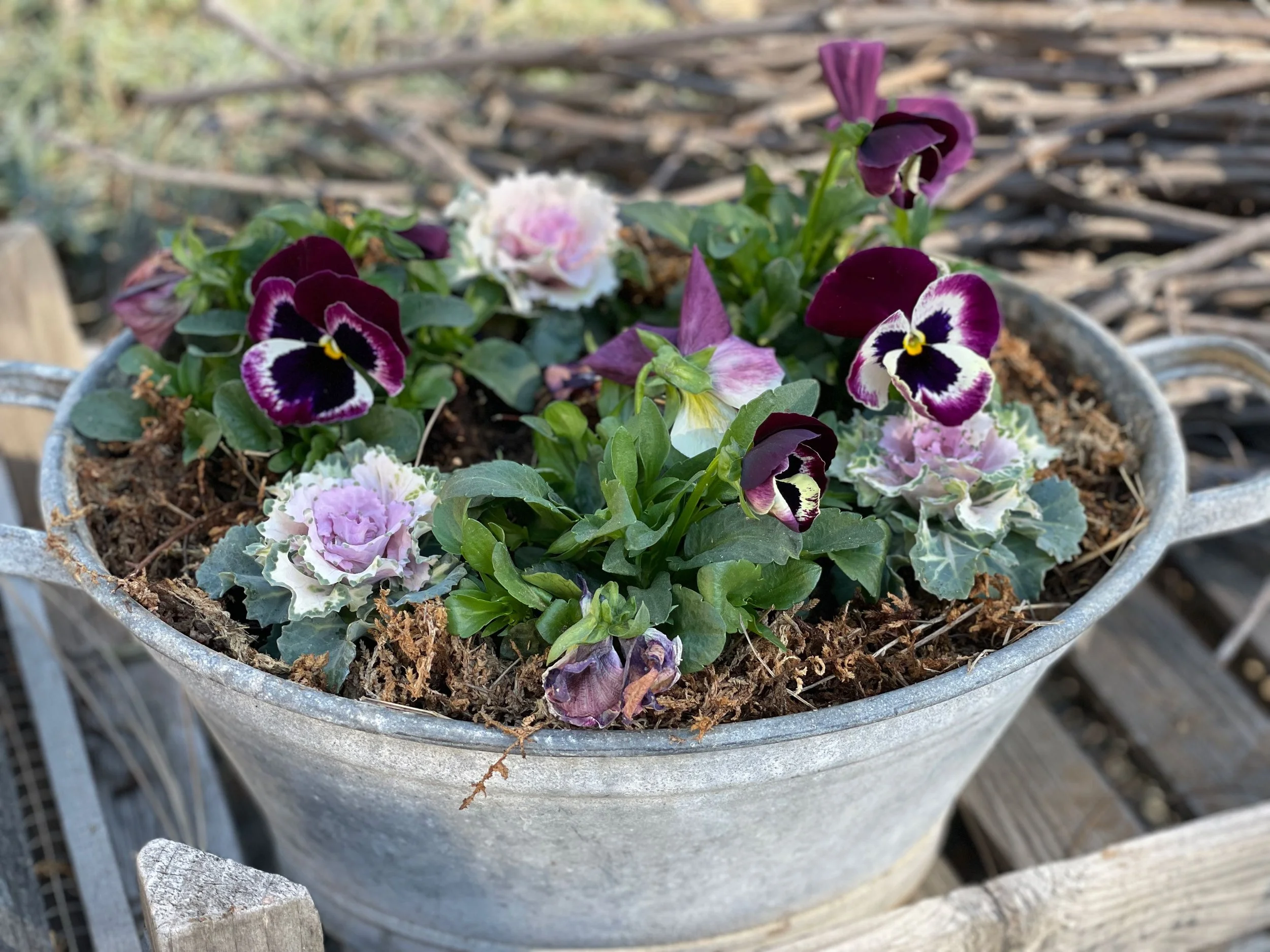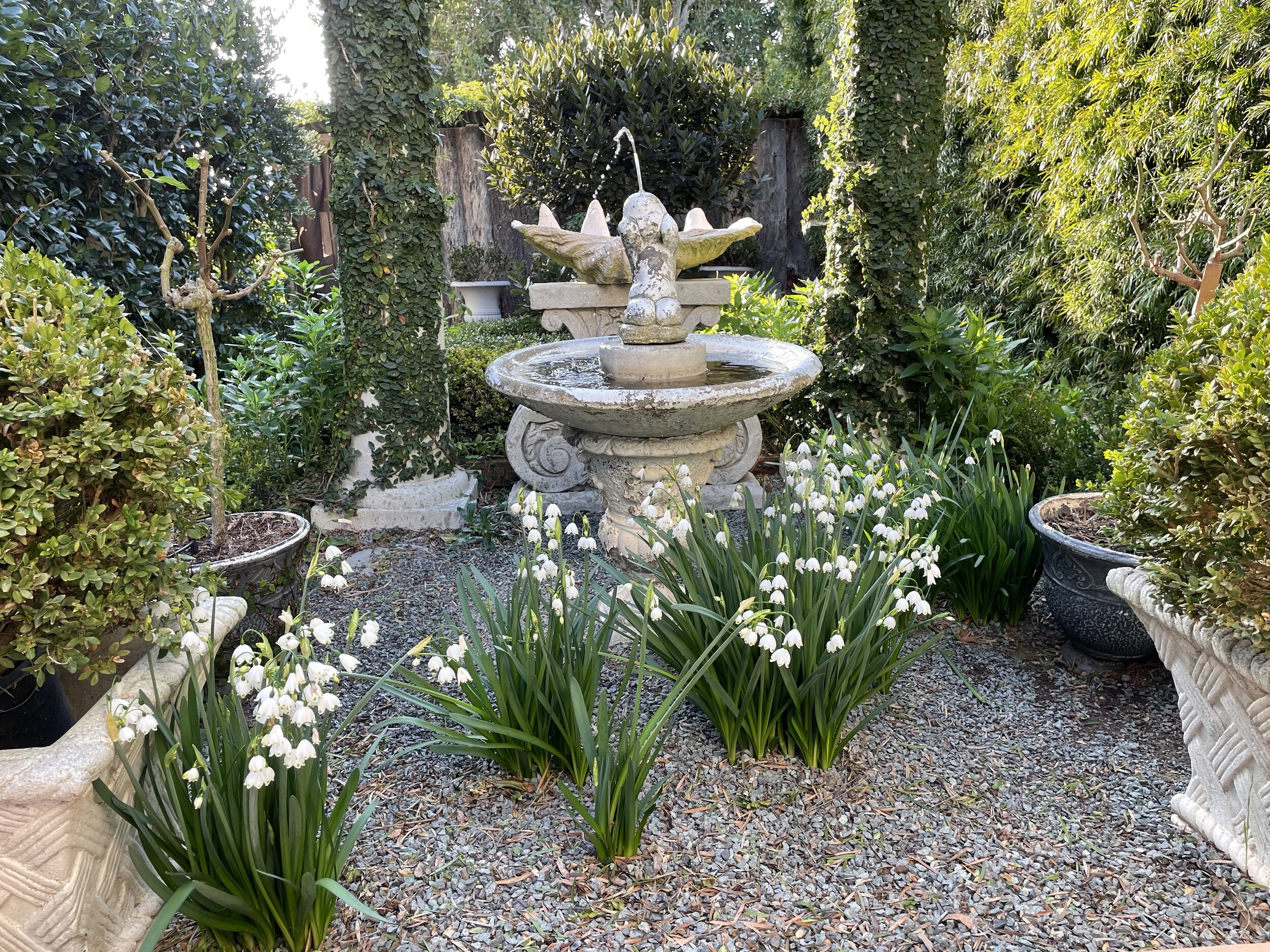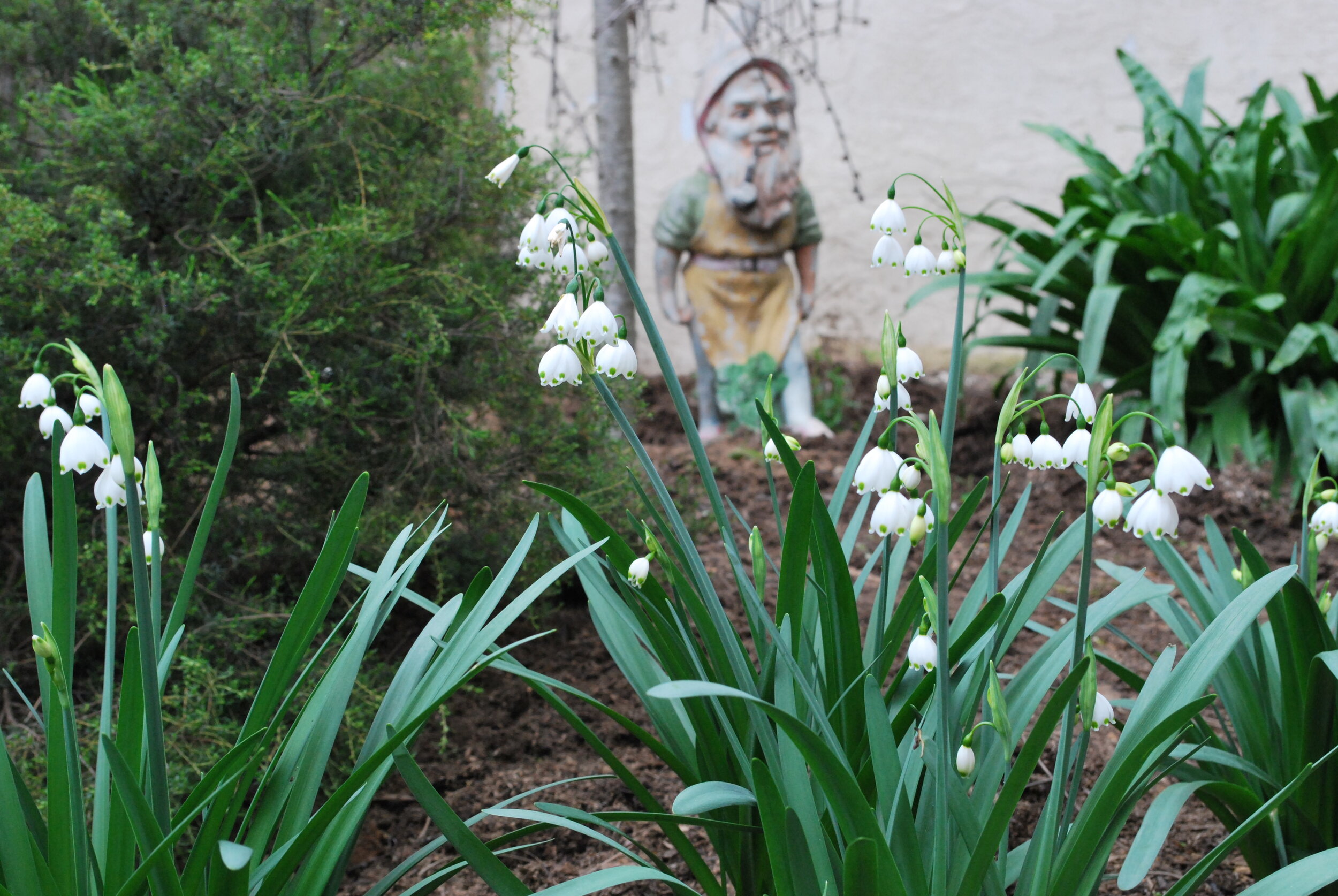Spring Prepping the Vineyard
I mentioned previously a few weeks ago, all of the spring sprucing I was doing in the garden. Well, my husband, John, and I have also been doing some sprucing in the vineyard, and prepping for the year ahead. It can be a big chore, but also very rewarding. Time well spent now means a continued healthy vineyard and a successful harvest in the fall.
Vines have been pruned back to their two cordon arms. Vineyard rows have been mowed twice already to keep weeds low and at bay. I have tried sowing cover crops a few times between the rows, but have been unsuccessful most likely because of low winter rains. The vines have drip irrigation at each plant, but no irrigation in the rows.
For one reason or another, our grapes last harvest were beautiful, but half of our normal yield. I heard and read that most of California vineyards had lower than usual yields. It could also have been very little winter rains, high winds at flowering, etc. Many factors could have played into it.
I have added compost to our vines before, and thought it might be a good time to add some rich compost to them this year. While I am doing my flower beds, let’s do the vineyard too!
This year I added and mixed in three generous shovels of compost to the base of each grapevine to add back organic nitrogen. Compost has amazing qualities to benefit soil and plants. See below for my many related past posts on composting. I am composting year-round, but with the quantity to cover each grapevine, I bought a yard and a half of compost from Agriservice El Corazon in Oceanside. It helps if you have a truck, or access to a truck, although Agri Service El Corazon delivers too. If interested in delivery services, please visit their information online, and call them for more details.
Adding Rich Compost to Each Grapevine Base
I have been composting for a very long time on our property. When you have chickens, it is almost a necessity. Chicken manure is “green gold” and not to be wasted. It is a perfect green to add to your compost bin besides your kitchen scraps, and landscape greens. It is a hot manure however, and will burn your plants if it not aged and broken down into compost with your other ingredients.
I add compost mixed with my soil for every plant, tree, and vegetable bed I plant. Compost adds back valuable nitrogen, and has about ten fantastic attributes. Compost is also very dark and adds a dressy look to your flower beds and around your landscape.
For composting tools, products, and services, please look into what your local city offers. You might be surprised.
Related Past Posts on Composting:
Ten Ways Composting Benefits Your Soil
How to Compost in Your Backyard
Bon Appétit et Bon Weekend…Bonnie



